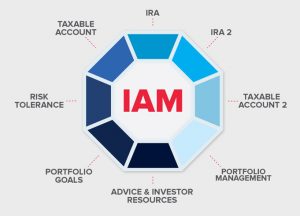

Unified investment account management is extraordinarily important in order to achieve investment success.

This article outlines the concept of relating leaky pipes to chronic under-performing stocks. (more…)

Craig L. Israelsen, Ph.D.
www.7TwelvePortfolio.com
April 2017
It’s time for a better “balanced” portfolio. Way back when, there were two dominant investment categories (or asset classes), namely US stock and US bonds.
Based on the results of a quiz sent out by FINRA, Millennials are significantly less financially literate than preceding generations. When asked five questions about economics and finance, only 24% could answer four or five questions correctly, compared to 38% of Generation Xers (see graph). (more…)

With the prospects of rising interest rates, investors may be re-thinking the role and purpose of fixed-income (bonds) investments within their investment portfolio.
Written By: Jason T. Willms
There has been a long held stigma against making changes to a 401(k) plan, but in order to maximize returns, observation and stewardship are imperative. 401(k)’s are designed to ignore short term volatility, but the intelligent investor can capitalize on these fluctuations to strengthen their portfolio for retirement.

As the close of 2016 quickly approaches, investor’s should start thinking ahead, reviewing and taking advantage of tax saving strategies. Here are three important tips that will help investor’s manage tax consequences, while helping to better manage their investment portfolio(s).

Managing a portfolio around a concentrated position(s) may be one of the most difficult concepts for investors. A “concentrated position” is an investment holding that represents a disproportionate percentage of a portfolio. Investors who choose to ignore concentrated positions within their portfolios are taking unnecessary risks. Rarely does a concentrated position resolve itself. Instead, investors need to adopt a strategy to systematically alleviate this concentrated risk. (more…)